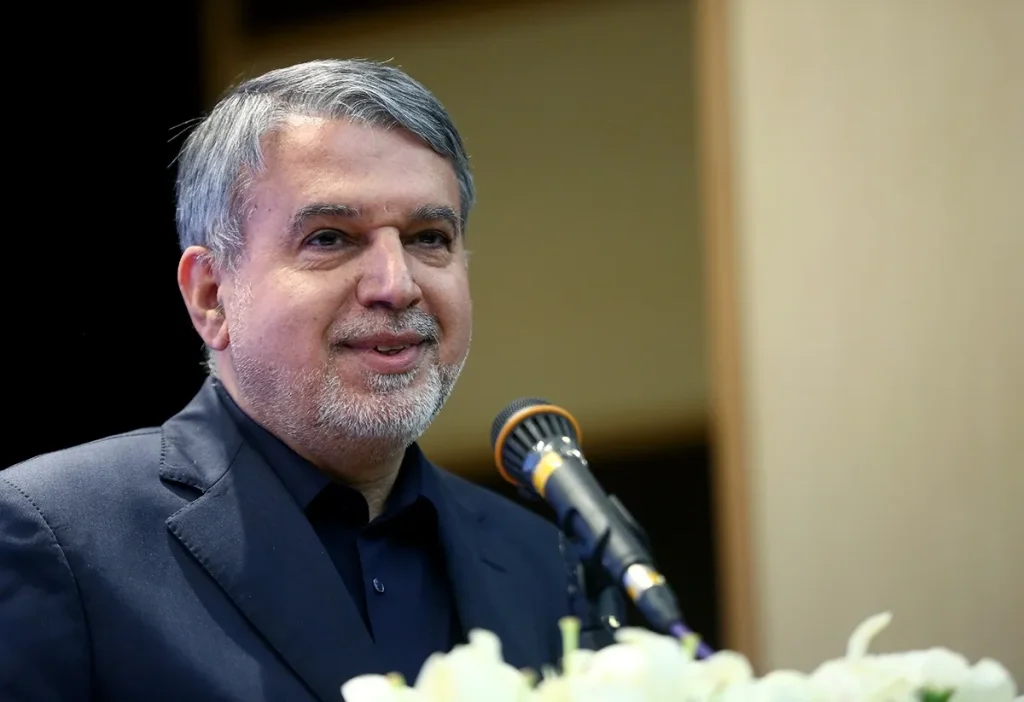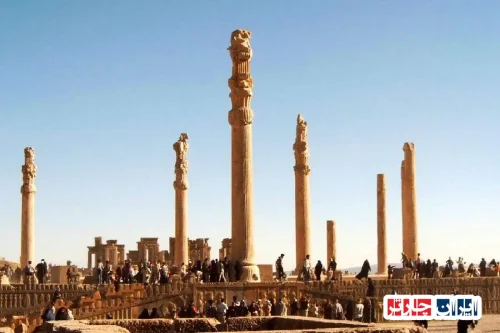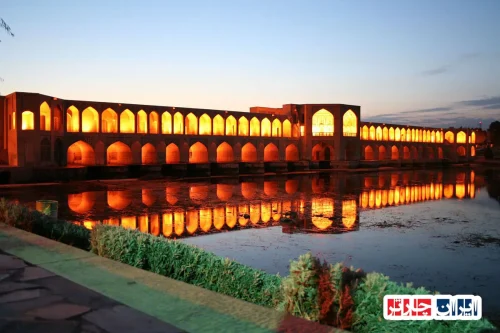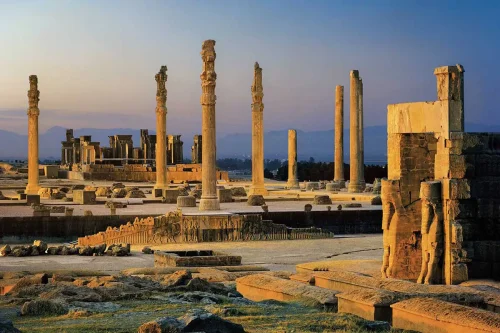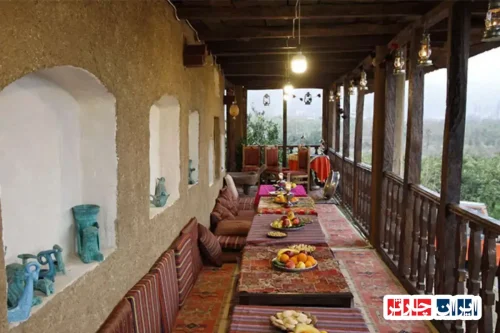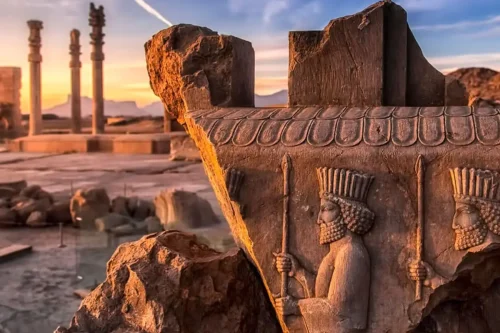Heritage Minister: Halil Civilization is the Pride of Iranian Culture
The Halil Civilization, formed in the Jiroft region of Kerman province, is known as one of the oldest and most significant civilizations in Iran. During this research week, the Minister of Cultural Heritage, Tourism, and Handicrafts emphasized that “Halil Civilization is the pride of Iranian culture.” This statement reflects the importance and historical value of this civilization for the national identity of Iran. At the appreciation ceremony, the Heritage Minister commended the efforts of Kerman’s cultural heritage managers and the archaeology teams for their numerous excavations, adding that “the Halil-Roud Civilization is a testament to the cultural and artistic richness of Iran.” He also highlighted the importance of preserving these historical artifacts, stating that “your efforts in understanding and maintaining this cultural heritage are highly commendable.” Continuing his speech, the Heritage Minister reiterated that “Halil Civilization is the pride of Iranian culture,” and noted that this civilization holds a special place not only nationally but also internationally. He welcomed international collaborations in archaeology and heritage preservation, stating that “joint efforts can enhance the level of knowledge and protection of Iran’s cultural heritage.” In conclusion, the Heritage Minister stated that “Halil Civilization is the pride of Iranian culture,” which not only signifies Iran’s rich historical background but also reflects ongoing efforts to preserve and enhance the country’s cultural heritage. This has led to increased attention towards the protection of historical heritage in Iran and plays a significant role in the development of cultural tourism.
For more information on Halil Civilization and other historical artifacts in Iran, visit the Iran Charter website or call 02191091190. You can also email info@irancharter.ir for additional information.
Minister of Heritage: Halil Civilization is the Pride of Iranian Culture
The Minister of Cultural Heritage, Tourism, and Handicrafts emphasized the importance of the Halil civilization, stating that this ancient civilization plays an irreplaceable role in enhancing national culture as one of the main pillars of Iran’s cultural identity. Iran Charter, by conducting numerous research projects, is striving to pass on this valuable heritage to future generations and to secure a prominent place for Iran on the cultural map of the world.
The Importance of Halil Civilization in Iranian National Identity
The Minister of Cultural Heritage announced that the Halil civilization has not only enriched Iran’s history but has also significantly strengthened the national identity of Iranians. Iran Charter focuses on preserving and restoring the archaeological remnants of Halil to deepen the connection between people and their history, thereby reinforcing the sense of belonging and national pride.
Minister of Heritage: Evidence of Halil Civilization as an Indicator of Iran’s Cultural Depth
In his remarks, the Minister of Cultural Heritage indicated that the Halil civilization is living evidence of Iran’s rich culture. Iran Charter supports archaeological projects aiming to further introduce this unique civilization to the world, not only helping to preserve cultural heritage but also elevating Iran’s status in the global arena.
Conservation of Halil Civilization Heritage: Consequences of Heritage Protection
The Minister of Cultural Heritage emphasized the necessity of protecting the Halil civilization, noting that this requires extensive cooperation between governmental and private organizations. Iran Charter has taken effective steps toward preserving this valuable civilization by implementing conservation programs and enhancing education in cultural heritage, ensuring the Halil heritage remains in Iran’s history forever.
Minister of Heritage: International Collaborations in Safeguarding Halil Civilization
In the context of preserving and promoting the Halil civilization, the Minister of Cultural Heritage emphasized the importance of international collaborations. Iran Charter is expanding knowledge and skills necessary for optimal utilization of this cultural heritage by establishing partnerships with global institutions and reputable universities. These collaborations significantly aid in the exchange of experiences and new techniques in the field of Halil civilization’s conservation and research.
New Research in Halil Civilization
The Minister of Cultural Heritage announced that new research on the Halil civilization is on Iran Charter’s agenda. With the support of archaeological teams and the use of advanced technologies, these studies aid in uncovering unseen aspects of this civilization. These efforts not only help increase historical knowledge of Iran but also highlight Halil civilization’s key features on the global stage.
Minister of Heritage: Impact of Halil Civilization on Iran’s Cultural Tourism Development
The Minister of Cultural Heritage noted the positive impact of the Halil civilization on the tourism industry, stating that this civilization plays a significant role in attracting tourists to Iran. Iran Charter aims to offer an unparalleled experience of visiting this cultural heritage to tourists by developing tourism infrastructure around Halil archaeological sites and offering diverse services, thus boosting the local economy.
Heritage of Halil Civilization: Perspective of Minister of Cultural Heritage of Iran
The Minister of Cultural Heritage of Iran presented a comprehensive perspective on the Halil civilization heritage, highlighting its significance in Iran’s history. Iran Charter is moving towards enhancing the country’s cultural position by developing long-term strategies to preserve and promote the Halil civilization as a symbol of Iran’s rich history and culture. This perspective includes educational, promotional, and research programs that aid in preserving and perpetuating the Halil heritage.
Minister of Heritage: Cultural and Artistic Significance of Iran’s Halil Civilization
In his speech, the Minister of Cultural Heritage stressed that the Halil civilization holds special significance not only historically but also culturally and artistically. Iran Charter is making efforts to preserve and expand the artistic heritage of this civilization by supporting artistic and cultural projects related to Halil civilization. These actions promote Halil’s art and culture as part of Iran’s national heritage, preserving its artistic values for future generations.
The Scientific Role of Iran Charter in Halil Civilization Research and Development
The Minister of Cultural Heritage highlighted the crucial role of Iran Charter in Halil civilization research and development. By supporting scientific research and providing the necessary resources for archaeologists, Iran Charter contributes significantly to discovering and documenting various aspects of this civilization. These efforts help increase global knowledge about the Halil civilization and establish Iran’s position in the international archaeological arena.
FAQ
- What civilization did the Minister of Cultural Heritage describe as the pride of Iran’s culture?
- The Minister of Cultural Heritage referred to the Halil or Jiroft civilization as the pride of Iran’s culture and civilization.
- Who attended this event?
- The event was attended by the Minister of Cultural Heritage, the Director-General of Cultural Heritage of Kerman, archaeologists like Mansour Sajjadi, Nader Alidadi Soleimani, Hamideh Choubak, Gader Shirvani, and other key figures in Jiroft archaeological research.
- How did the Minister describe the Halil or Jiroft civilization?
- The Minister described the Halil or Jiroft civilization as an independent civilization from the Bronze Age with its own unique architecture and language, considering it the pride of Iran’s culture and civilization.
- Which historical sites in the Jiroft region were mentioned as significant?
- Significant historical sites in the Jiroft region mentioned include the northern and southern Konar Sandal sites, the Islamic city of Daqianus, and the Mahtoot Abad cemetery.
- Who initiated the archaeological work at the Konar Sandal site?
- Professor Yousef Majidzadeh began the archaeological explorations at the Konar Sandal site.
- From which historical period do the layers of Konar Sandal originate?
- The archaeological layers of Konar Sandal date back to the late third millennium BC.
- What type of tablet was discovered at the Konar Sandal site?
- A tablet with an unknown script was discovered at the Konar Sandal site.
- From which ancient kingdom might the Konar Sandal civilization remnants be?
- The remains of the Konar Sandal civilization might be from the lost kingdom of Aratta.
- What role did the Mahtoot Abad cemetery have in archaeological discoveries?
- Despite illegal excavations and destruction of thousands of graves, the Mahtoot Abad cemetery has provided archaeologists with valuable artifacts from the region’s ancient history.
- What discovery was made in the Islamic city of Daqianus?
- A mosque from the early centuries of Islam was discovered in the Islamic city of Daqianus.
- What are the architectural features of the mosque found in Daqianus?
- The architectural style and the artifacts found from the mosque in Daqianus are valuable in their own right.
- What advice did the Minister of Cultural Heritage give to researchers?
- The Minister expressed gratitude to researchers for their continued efforts in recognizing, protecting, and introducing Jiroft’s historical sites, wishing them success and prosperity.
- What responsibility did Mansour Sajjadi have in Jiroft’s excavations?
- Mansour Sajjadi was responsible for continuing excavations and organizing the Konar Sandal site after joining the excavation team.
- What features do museums related to the Jiroft civilization have?
- Museums related to the Jiroft civilization display valuable cultural and artistic objects, showcasing the importance of the Jiroft historical collection.
- How has the Minister of Cultural Heritage supported Jiroft excavations?
- The Minister has praised the efforts and dedication of researchers in conducting problem-oriented archaeological explorations in valuable historical collections, supporting their endeavors.
- What role did Professor Yousef Majidzadeh play in Jiroft’s excavations?
- Professor Yousef Majidzadeh led the archaeological excavation team at Konar Sandal, initiating operations and introducing the Konar Sandal civilization.
- How have archaeological excavations impacted the understanding of the Jiroft civilization?
- Archaeological excavations have led to the discovery of unique cultural and artistic artifacts, tablets with unknown scripts, and ancient architectures that contribute to a deeper understanding of the Jiroft civilization.

